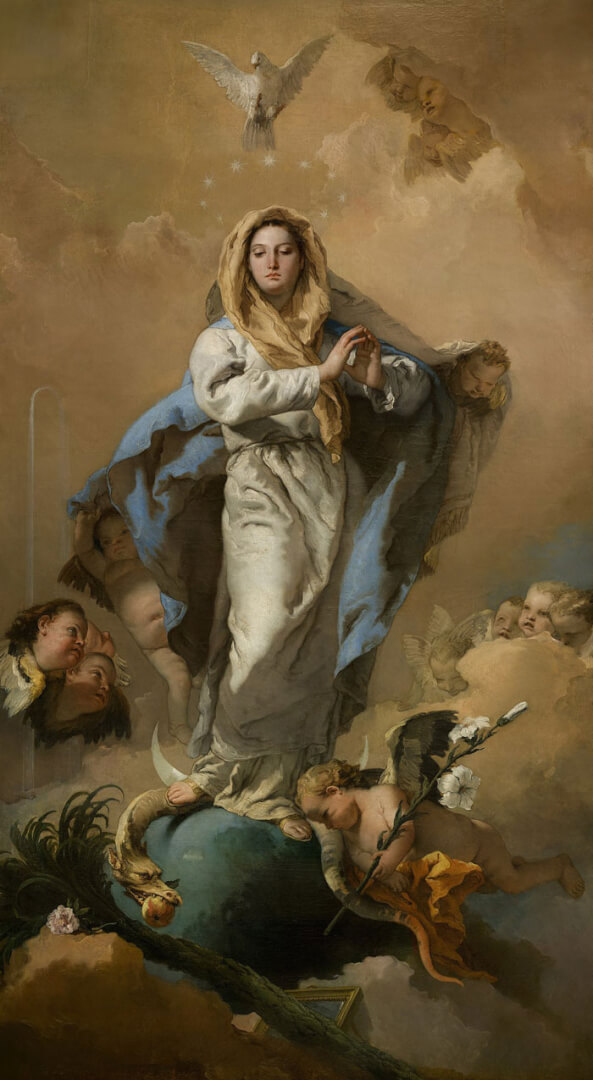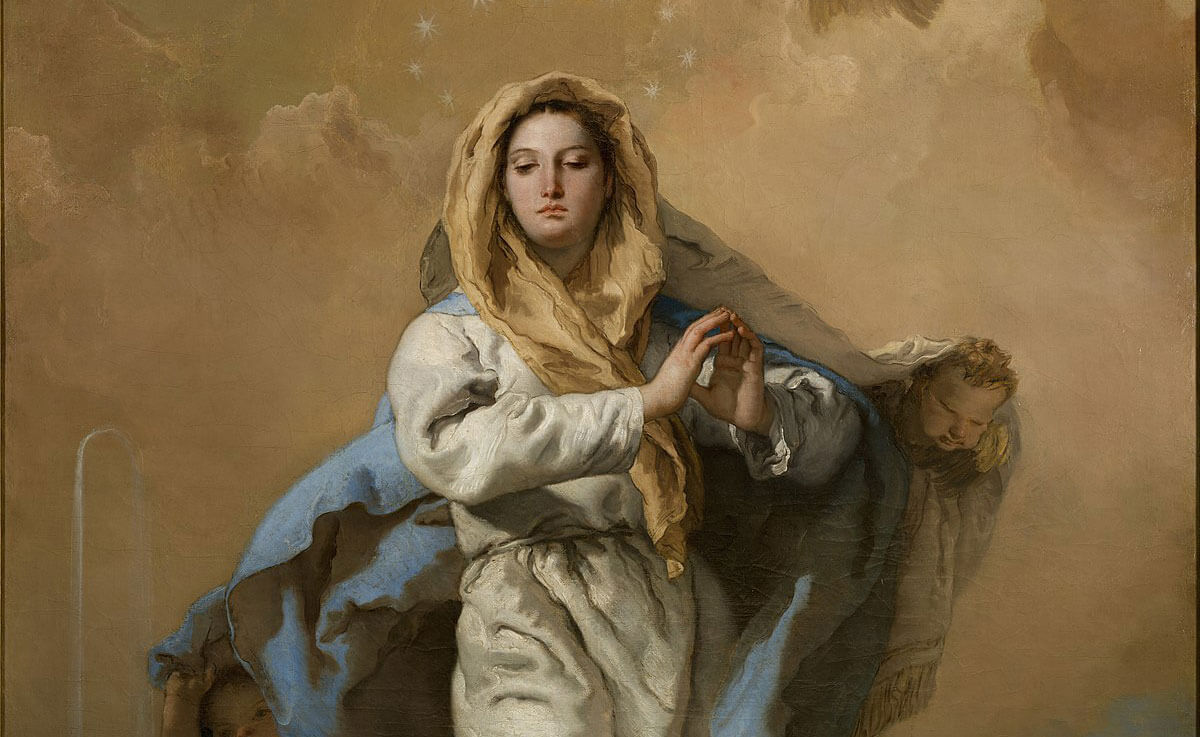Today’s great Solemnity of the Immaculate Conception of Mary is a doctrine that is misunderstood by many. If you have ever correctly explained this teaching to someone else, congratulations! You’re well ahead of many Catholics.
The Immaculate Conception is often confused with the Virginal Conception of Jesus, at the Annunciation (which we celebrate on March 25 —9 months before Christmas, natch). And PSA for my fellow football fans: please note that today’s feast has nothing to do with legendary Pittsburgh Steeler Franco Harris’ “Immaculate Reception”!

Here’s the actual definition, straight from Blessed Pope Pius IX, “Pio Nono” himself:
We declare, pronounce, and define that the doctrine which holds that the most Blessed Virgin Mary, in the first instance of her conception, by a singular grace and privilege granted by Almighty God, in view of the merits of Jesus Christ, the Savior of the human race, was preserved free from all stain of original sin, is a doctrine revealed by God and therefore to be believed firmly and constantly by all the faithful.
–Ineffabilis Deus, Apostolic Constitution of Pope Pius IX solemnly defining the dogma of the Immaculate Conception, December 8, 1854.
One of the things I strive to do in both The Faith Explained program and on The Cale Clarke Show is to show the biblical basis of our Catholic faith. In the Annunciation account in Luke’s Gospel, when the archangel Gabriel greets Mary, it marks the only recorded incident in the Bible when an angel greets someone by their title, not their name: “Hail, Full of Grace, the Lord is with you” (Lk. 1:28). This, of course, is also the first line of the Hail Mary, with the second line, “Blessed are you among women, and blessed is the fruit of your womb”, stemming from Luke 1:42. So much for the ridiculous argument that the Hail Mary is “unbiblical”!
Speaking of the phrase, “Full of Grace”, in the original Greek of Luke’s Gospel, it is an interesting term: kecharitomene. It means, literally, “one who has been made full of God’s grace” (biblical translations that render this term “highly favored one”, or something to that effect, don’t cut it). It’s a past perfect term, meaning that, at some point in the past, Mary was made perfectly full of God’s grace. This condition extends out into the future, into eternity. This is exactly what the Immaculate Conception is all about – that, from the first moment of her existence, Mary was preserved free from all stain of Original sin. If one is perfectly full of the grace of God, there is no room for sin.
This harkens back to the original “Gospel” that followed the Original Sin. It’s called the “protoevangelium” (“first Gospel”) that appears right after Adam and Eve fell into Satan’s trap. God says to the serpent, “I will put enmity between you and the woman, and between your offspring and hers; he will strike at your head, while you strike at his heel” (Genesis 3:15). Now, the “woman” ultimately can’t be Eve, because enmity means “total opposition”. Eve was already under the sway of Satan, due to her sin. No, this points forward to Mary, the new Eve — which is why Jesus (the new Adam) calls her “woman” in John’s Gospel. She is a powerful help to us in our own battle against the enemy.
O Mary, conceived without sin, pray for us who have recourse to thee!

Our Lady is celebrated under many names, from popular apparitions to small-town titles. Each reveal something different about the Blessed Mother to us – and affirms what we already know of her love and intercessory power! Deepen your devotion to Our Lady with Miracles, Mysteries, & Mary, a monthly collection of stories, Church teaching, reflections, and so much more – guaranteed to expand your knowledge of Our Blessed Mother. Check out our archive page to catch up on our year of Our Lady!



